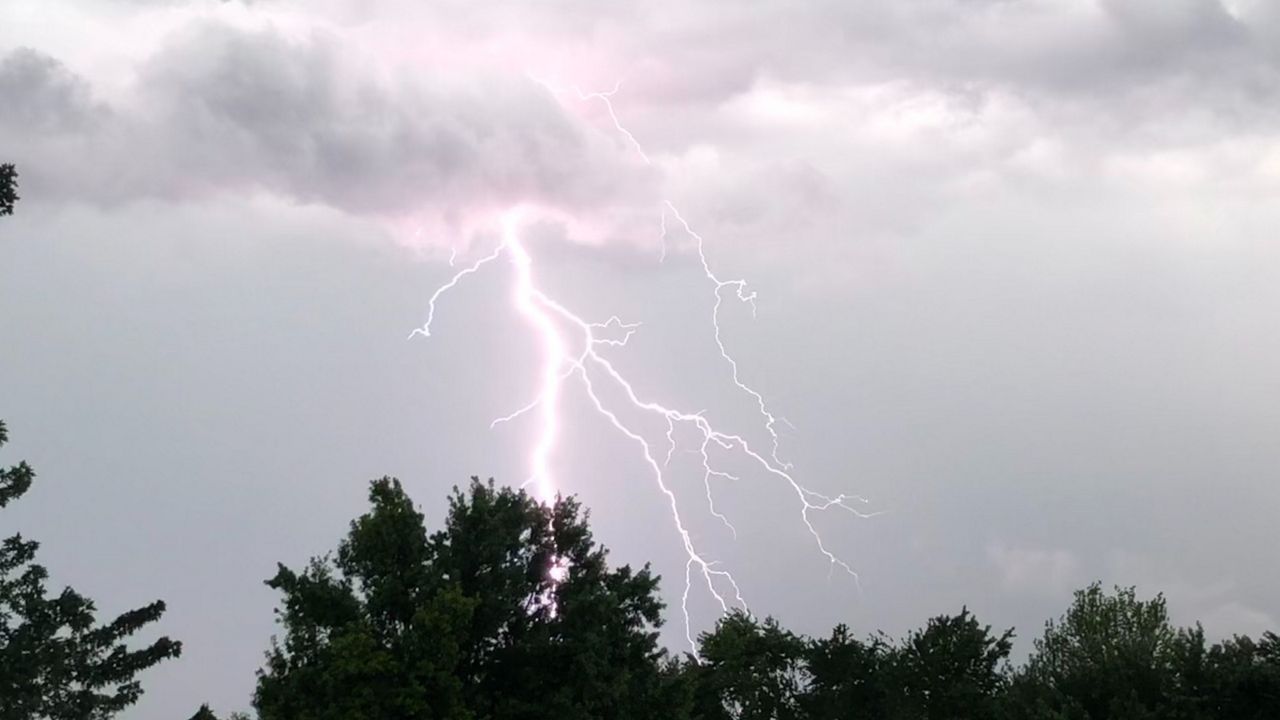Last week, we focused in on part of the water cycle. That was evaporation and condensation. This week, we’ll study the third portion of that water cycle, that one the most exciting of all! We’ll make precipitation using cotton balls and a mason jar!
Before we get to the experiment, let’s recap what the water cycle is. Heat from the sun is what gets the water cycle started. When water heats up, it starts to evaporate. In terms of the Earth that happens on a very large scale. This process however can be seen on a small scale as well. If you fill up a glass of water and leave it on a kitchen counter and come back a day later. Some, if not most, of the water will be gone. That’s because of evaporation.
Once the water evaporates, it turns into water vapor and expands in our atmosphere. As it rises throughout, the air temperature cools and the water vapor is transformed back into a liquid. This process is what creates clouds and is called condensation. Again, clouds represent condensation on a large scale, but a glass with water in it, as the water is evaporating, will get liquid on the outside. That process represents condensation on a small scale.
Precipitation is the third process of the water cycle. When a cloud fills with water and it becomes too heavy to hold, it rains or snows. This is called precipitation. That precipitation, no matter what form, melts again and ends up back in lakes, rivers, oceans, and streams. The process then starts all over again! This process is crucial to keep all things living and the one we’re going to focus in on today!
For this experiment, you will need:
- A mason jar
- A small plastic cup (one you don’t mind poking holes in!)
- Cotton balls
- Water
- Food coloring
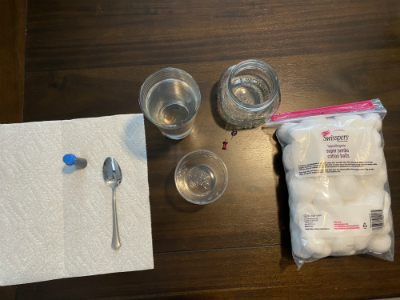
First, you will mix together water and blue food coloring in a cup. You only need a small amount to make the experiment work BUT the more you make, the longer you can create rain!
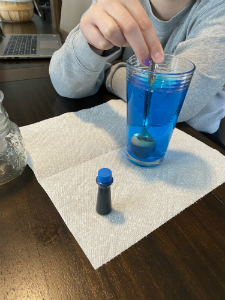
Next, you will poke holes in a small plastic cup. A Solo cup will work and is what I’m going to use but keep in mind if using, the kids won’t be able to see inside to see the liquid go down.
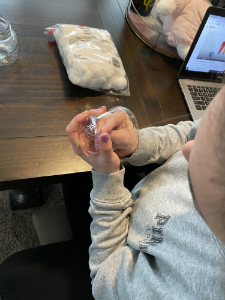
Third, you are going to stuff the small cup with cotton balls. We only want to fill the cup up to about the half way point.

After this, have your children poor the blue water over the cotton balls. It will take a bit for it to happen, but once it does, ‘rain’ will start to fall through the clouds. Children will get a kick out of this!
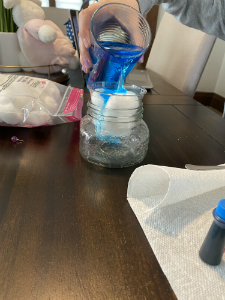
This is a good opportunity to talk about why rain falls outside. Water vapor and particulate matter (usually air pollution) in the sky stack up to create clouds. When so much water vapor gathers, clouds can’t hold it all so it has to go somewhere. Where it goes is down! Gravity forces the water to fall to the ground!

For children that are older, an added talk you can have is about gravity and air pressure. In order to show this experimentally, put your hand over the top of the plastic cup. This will stop the ‘rain’ from falling. The reason is because the added upward air pressure will become stronger than the strength of gravity pulling the rain down!
Have fun and be sure to take lots of pictures to share with me! Now, take the quiz below!





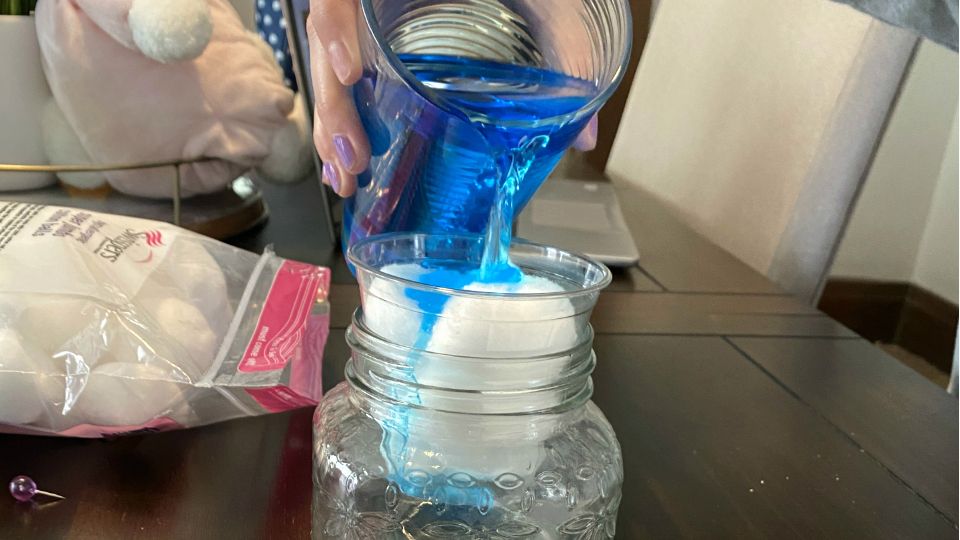
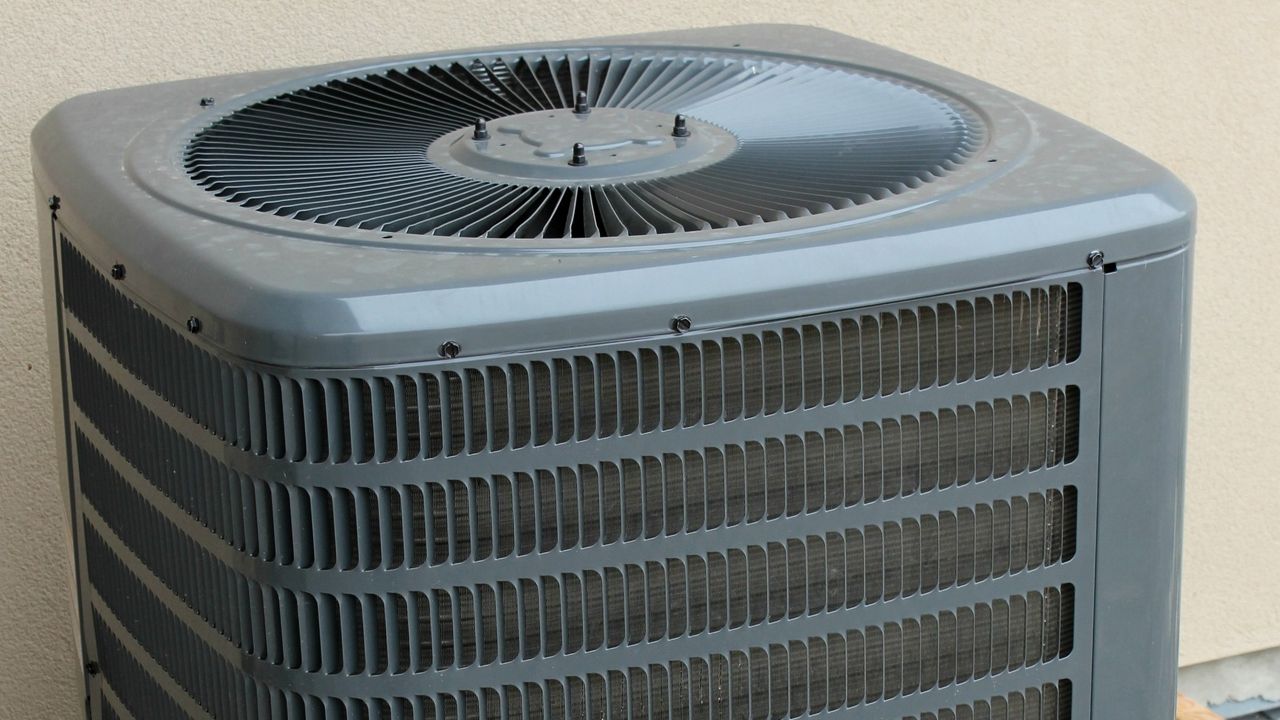
)
